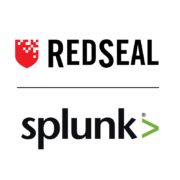RedSeal and Splunk Combine Forces to Deliver Automated and Continuous Response, Optimize Analytics-Driven Security and Improve Operational Efficiency
SUNNYVALE, Calif. & SAN FRANCISCO – RedSeal, the leader in network modeling and cyber risk scoring, and Splunk Inc., provider of the leading software platform for real-time Operational Intelligence, today announced that RedSeal has joined the Splunk® Adaptive Response Initiative. Powered by a growing list of leading cybersecurity technology vendors, Adaptive Response is a best-of-breed security initiative that leverages end-to-end context and continuous response to improve security operations with an adaptive security architecture. The announcement was made at the 2017 RSA Security Conference.
Following its unveiling at the 2016 RSA Security Conference, the Adaptive Response Initiative now includes over 20 participating vendors as members. With this extensive network, organizations can use Splunk Adaptive Response to further interact with data, extract and share new insights, gain more context and invoke actions across key security and IT domains. Ultimately, this allows customers to detect threats faster, make analytics-driven decisions and improve operational efficiencies within their Security Operations Center (SOC).
“Our increasingly digital world underscores the need for enterprise networks to be resilient to cyber events and network interruptions. Improved security posture and accelerated incident recovery are central to achieving this goal,” said Ray Rothrock, CEO of RedSeal. “By combining Splunk’s centrally positioned analytics-driven security platform with RedSeal’s network modeling and risk scoring platform, we are thrilled to help security professionals around the world gather even more context to detect threats quicker and deliver a more automated and continuous response against advanced attackers.”
While many organizations employ a layered, multi-vendor approach to security, most individual solutions are not designed to work together outside of the box. Splunk Enterprise Security (Splunk ES), working in conjunction with technologies like RedSeal’s network modeling and risk scoring platform, extends analytics-driven decision-making and improves detection, investigation and remediation times by centrally automating retrieval, sharing and response.
“We created the Adaptive Response Initiative so organizations could efficiently combat advanced attacks while utilizing their existing security architectures. Members like RedSeal are key to the success of Adaptive Response,” said Haiyan Song, senior vice president of security markets, Splunk. “Together we will solve this very challenging problem facing every enterprise.”
About RedSeal
RedSeal puts power in decision makers’ hands with the essential network modeling and risk scoring platform for building digitally resilient organizations. RedSeal’s Digital Resilience Score, modeled after a creditworthiness score, measures how prepared an organization is to respond to an incident and quickly rebound. The company’s platform adds value to existing network devices by working with them and building a network model. With this, customers can improve their security posture, accelerate incident response, and improve the productivity of their network and security teams. RedSeal’s customers are Global 2000 corporations and government agencies that depend on the most sophisticated security. Founded in 2004, RedSeal is headquartered in Sunnyvale, Calif. and serves customers globally through a direct sales and channel partner network.




